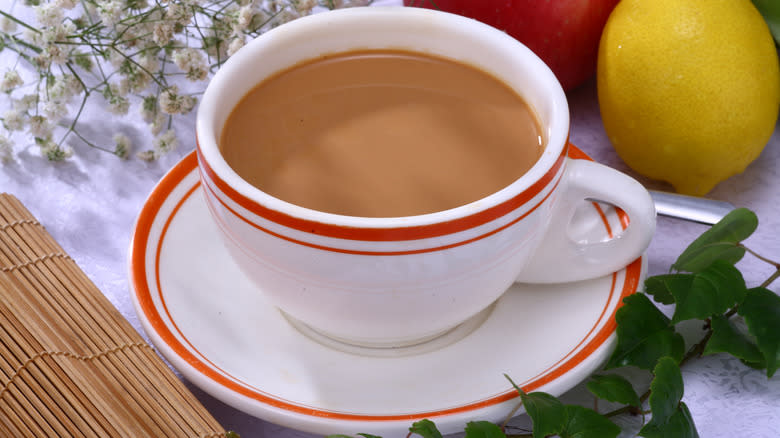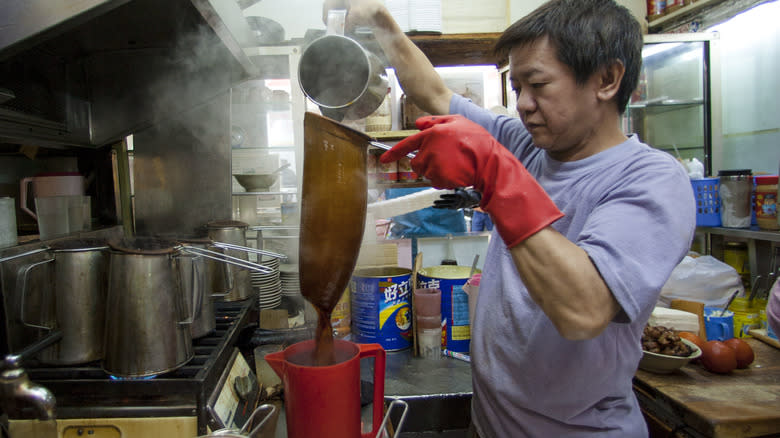The Single Ingredient That Makes Hong Kong-Style Milk Tea Unique

With boba tea and its wide array of flavors no longer a trend but a drink you can order even at Starbucks, more people are realizing how delicious tea is with some milk in it. Not all milk teas are made the same, however. Some regions have their respective formulas for crafting this drink, and one of them is Hong Kong. The first thing you'll notice about Hong Kong-style milk tea is how fragrant, creamy, and strong it is. Credit that to its use of Ceylon black tea. A blend of tea leaves harvested from the Camellia sinensis plant grown in Sri Lanka, it's named after the South Asian country's former label as a British colony.
Ceylon tea is also referred to as Orange Pekoe, which is a grade of black tea rather than an indication of its flavor. Orange Pekoe is regarded as the most premium among black teas, and those that come from Sri Lanka are said to be bold and robust, with chocolate and citrus notes. The "Orange" in the grading label is believed to be lifted from the Netherland monarchy's House of Orange-Nassau since the country was a major importer of Asian tea during the 18th century through the Dutch East India Company. Pekoe, meanwhile, came from the Dutch's romanization of the Chinese term bai ho, which means "white down." It refers to the fuzz covering a still-unopened leaf bud, and tea harvesters believe that the younger the leaves are, the stronger the tea would taste.
Read more: 18 Boba Flavors, Ranked Worst To Best
Hong Kong-Style Milk Tea Is A Blend Of Eastern And Western Influences

The way Hong Kong-style milk tea is prepared is also different: The brewed Ceylon tea is "pulled" or poured back and forth four times to enhance its color and flavor. Each time, it's strained through a clean, stocking-like silk cloth to remove its bitterness and any tea leaf residue. This technique is why Hong Kong-style milk tea also gets called silk stocking or pantyhose tea. To temper the beverage's strong flavor, either condensed milk or evaporated milk and sugar are added for sweetness.
Hong Kong's tea-drinking culture started when it was still a British colony, although for the longest time, tea wasn't accessible to locals. Only those who could afford to dine in hotels or high-end Western restaurants got to enjoy it. After World War II, it began trickling down to the public, and street food stalls made alterations to its ingredients to better fit the local palate and budget. Fresh milk, for example, wasn't a traditional ingredient in Chinese cuisine so they relied on the much cheaper evaporated milk imported from the West. Because it has 7% fat and 60% less water content than fresh milk, it makes the tea smoother and creamier than the British version.
The jolt of caffeine that Hong Kong-style milk tea provides made it popular, first, among laborers then white-collar workers. Soon, it became a ubiquitous drink, and in 2017, Hong Kong officially cited it as an item of "intangible cultural heritage."
Read the original article on Tasting Table.


